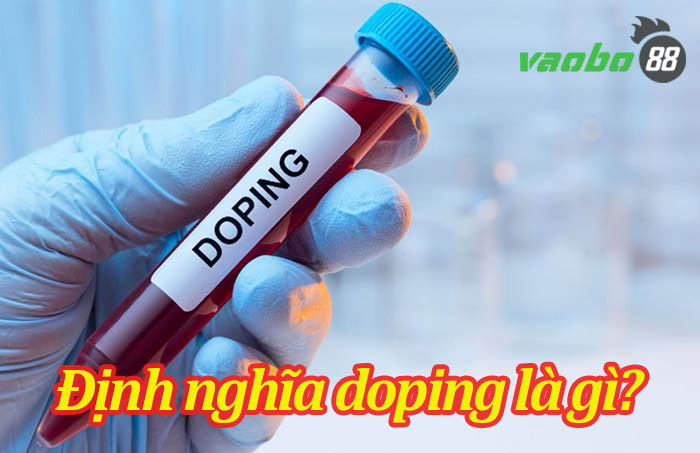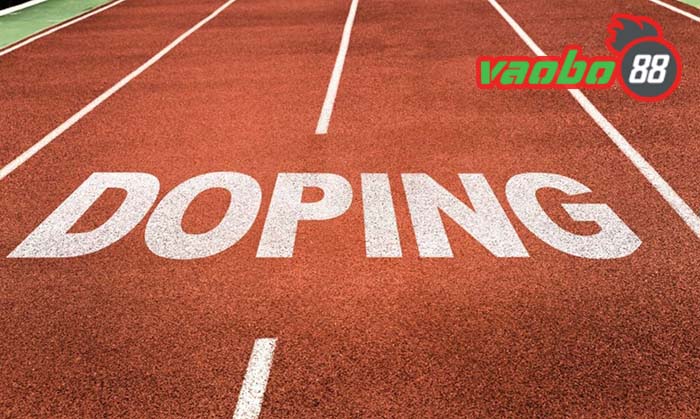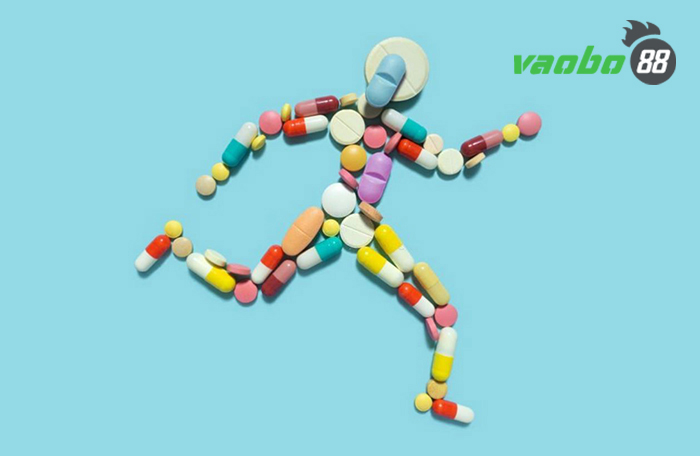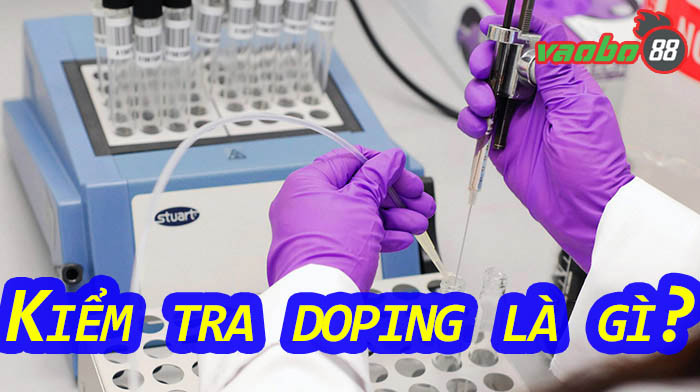What is doping test – an issue that causes trouble for the sports community in general and athletes in particular.
This type of substance is banned due to the harmful effects it brings to users. In addition, questions about this substance have also received much attention from enthusiasts of the king sport.
What is the definition of doping?
The concept of what does doping mean was born when it was discovered among professional athletes. Previously, at the ancient Olympic Games, such cheating tricks had never been discovered.
1/ What is Dope?
Dope is an English term that generally refers to addictive stimulants. Thus, dope includes drugs, tobacco, alcohol, etc. In the past, this term was also used to refer to a mixture of stimulants in opium used for horse racing. Dope was added to the most popular language dictionary in the world in 1889.

Later, as medicine developed, dope was also used for treatment purposes. Until now, stimulants have gradually been restricted in medicine due to the negative impacts they bring.
2/ What is Doping Test in sports?
The question what is doping test is answered corresponding to the term developed from dope, which refers to banned substances in sports competitions. These stimulants have a powerful effect on the athlete’s body. This helps them to be stronger, faster, and more enduring in high-level competitions.
With such wonderful effects, many players disregard the use of doping even though it is prohibited behavior. Most stimulants have the effect of increasing blood circulation as well as the metabolic process.
This only brings effectiveness for a certain period, after which the body will fall into a state of exhaustion. After many years of researching the components when what is doping test for athletes, leading doctors concluded that there are 3 most common types today:
a. Muscle doping
These include stimulants that help the athlete’s body produce a larger amount of hormones. This helps them enhance their muscle strength to a new level.

The group of subjects who often use muscle doping includes players, athletes, wrestlers, weightlifters, cyclists, triathletes, etc. Notable names in the group of muscle stimulants are EPO and Trimetazidine.
b. Blood doping
The blood doping group speeds up the process of transporting oxygen through red blood cells. As a result, muscle groups are provided with sufficient and abundant oxygen, helping the body avoid fatigue.
When using these stimulants, athletes can maintain peak performance for a longer period than usual. Substances like Erythropoietin (ESP) and Darbepoetin (NESP) are known in doping tests. Among them, Darbepoetin has effects lasting up to 10 days and possesses much stronger activity compared to Erythropoietin.
c. Neurological Doping
In addition to the two types mentioned above, there is another group of stimulants that also falls within the definition of what doping testing is. This is neurological doping – a type that can inhibit the muscle’s response to the central controlling brain.
As a result, the athlete’s body can operate continuously for many hours at high intensity. They feel no harm and become even more excited when using the aforementioned type of doping. The most commonly seen substances in this group include bromantane, caffeine, morphine (pain reliever),…. or substances that help the body excrete well.
Why is it necessary to ban the use of doping in sports?
So far, while exploring the concept of what doping testing is, I have only discussed their effects. However, that reality is just the tip of the iceberg when the body receives them.
 Why is it necessary to ban the use of doping
Why is it necessary to ban the use of dopingIn fact, stimulants are always absolutely banned in sports competitions. Doping tests are continuously conducted in major and minor sporting events. Athletes who use banned substances will immediately have their results annulled and be banned from competition. The ban period can range from a few months to permanently, depending on the severity and consequences.
Of course, this group of substances brings many unpredictable consequences, which is why they face such strong opposition. The benefits they provide are too meager to overshadow the boundless harm.
- First, according to the core Olympic spirit, the essence of competitions is fairness. The use of banned substances creates unfair competition, tarnishing the image of athletes.
- Second, the abuse of doping makes the subsequent time for users become exhausted. In the long run, it reduces health, mobility, and can even be life-threatening.
What are the harms of doping?
What is the purpose of doping testing in football? Is it simply to detect cheating players and annul their results?

The answer is no, the most important thing is still the health and life of the athletes. The organizers of the tournaments always prioritize the safety of the participants.
Completely eradicating doping from the sports world is not something that can be accomplished overnight. The entire community needs to work together to eliminate them through the smallest actions.
I have compiled the extremely dangerous harms of doping from various reputable sources.
Losing Fairness in Sports
The biggest harm that doping brings is the loss of the spirit of sports, the core element that creates competitions. Just ask, in a game where everyone uses doping, what is left of the competition? It is merely a place for athletes to measure who uses more banned substances, whose stimulants are more effective.
Moreover, this negatively impacts those who train and refine day and night. Honest athletes, no matter how hard they try, cannot bring home glory. Meanwhile, a few bad elements only care about partying and competing, yet achieve high results. It is truly shameful for those who are well aware of what doping tests are!
Doping Can Be Addictive
One very concerning thing for athletes using doping: They can be addictive. Doping tests can determine whether banned substances are present in the body. But doctors cannot know if that person is addicted or not.
Regardless of what one is addicted to, it brings negative impacts on both the body and society. It makes athletes unable to stop using, affecting the economy.
Additionally, addicts experience a rapid decline in health over time. Although most athletes are aware of the negative effects of doping, they still disregard and use it.
Severe Health Decline
Doping allows the body to operate at over 100% capacity, leaving many health consequences. Organs must work overtime for extended periods and cannot recover to their original state.
a. Muscle Groups Weaken, Fingers Swell
When the body operates continuously beyond its limits, the muscles are the parts that bear the heaviest consequences. After “working hard” continuously, they can no longer maintain the flexibility and firmness they once had.

In addition, the toes and fingers of those who abuse doping become swollen. Along with some health issues like diabetes if stimulants are used for a long time.
b. Suffering from Tremors in Hands and Feet
Gradually, as age increases, athletes who have been exposed to banned substances quickly lose their health. Their limbs are no longer strong like those of athletes, but instead face insomnia, nervous exhaustion, accompanied by trembling hands and feet.
c. Hormonal Disorders
Athletes who abuse doping must face serious consequences regarding gender changes. Female athletes secrete more male hormones, their skin becomes firmer, rougher, with signs of facial hair and menstrual cycle disorders.
Conversely, male athletes suffer from testicular atrophy, watery semen, and even erectile dysfunction and infertility.
d. Shock and Fever After Doping Effects Wear Off
Using too much Erythropoietin and Darbepoetin can cause blood vessels to become blocked or even burst. This leads to health issues such as infections, hemolysis, vomiting, rashes, high fever,…
e. Diseases Related to Internal Organs
Stimulants have a very negative impact on the internal organs of the human body. Long-term use causes damage and severe harm to the heart, liver, kidneys, and intestines.
What is doping testing?
What is doping testing is a familiar question that any athlete has encountered. This method aims to determine whether the athlete has used banned substances during sports competitions.

How is doping testing conducted? Currently, sports medical experts apply 2 testing methods.
- Method 1: Doping testing using the athlete’s current blood sample. This method provides quick results as it only requires a blood test of the athlete.
- Method 2: Doping testing by comparing the current blood sample and the stored blood sample. There are many types of doping that are very difficult to detect, so it is necessary to compare the two samples to reach a final conclusion.
Some famous doping tests of athletes
Have you heard of the famous scandals discovered during what is doping testing? A few famous athletes have lost their entire careers due to involvement with these banned substances.

Lance Armstrong is perhaps the most prominent name in sports who has ever abused banned substances. This cyclist has won the Tour de France championship 7 times and many other races. However, he was found to have used Erythropoietin to stimulate the production of red blood cells.
At the recent SEA Games 31, up to 6 Vietnamese athletes were found to have used doping. Previously, athletes Trịnh Văn Vinh and Hoàng Anh Tuấn from weightlifting, and Đỗ Thị Ngân Thương from gymnastics were also found to have used banned substances. The “golden boy” Maradona was also disqualified from the 1994 World Cup due to the use of Ephedrine.
Conclusion
What is doping testing along with related issues is of particular concern to sports agencies. Any act of using banned substances deserves condemnation and should be eliminated as early as possible.








